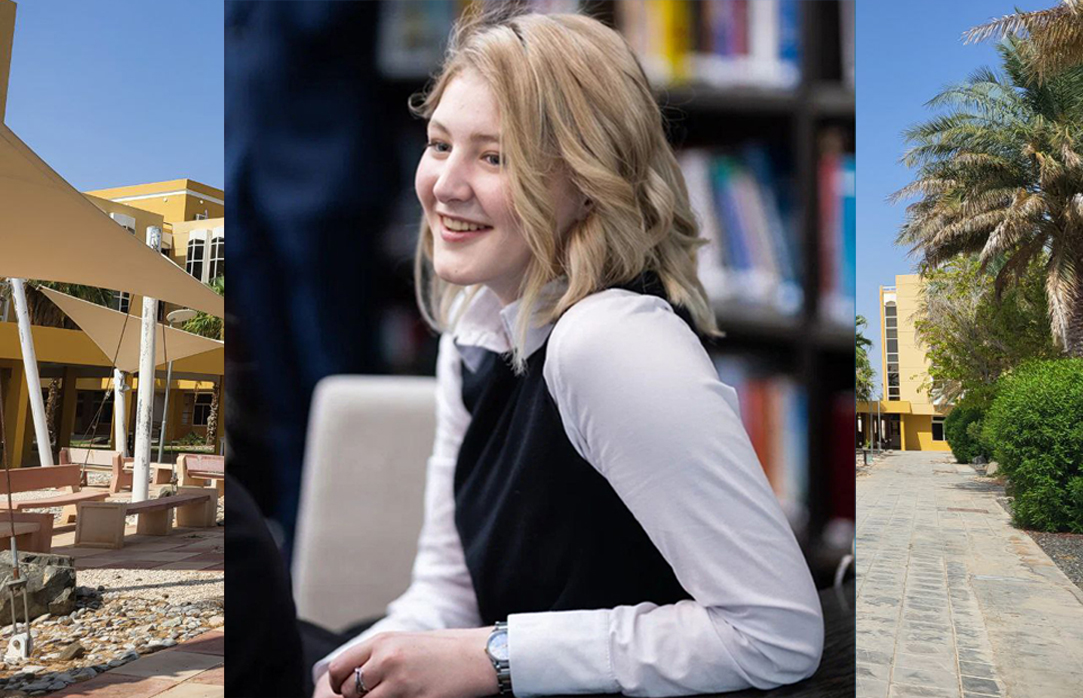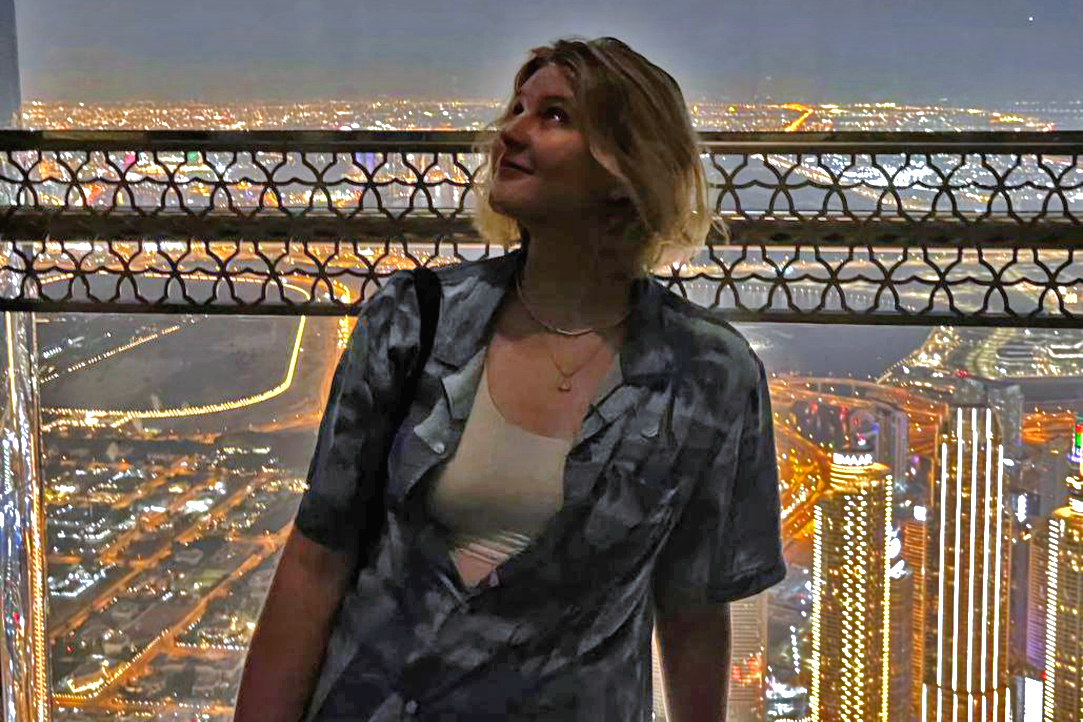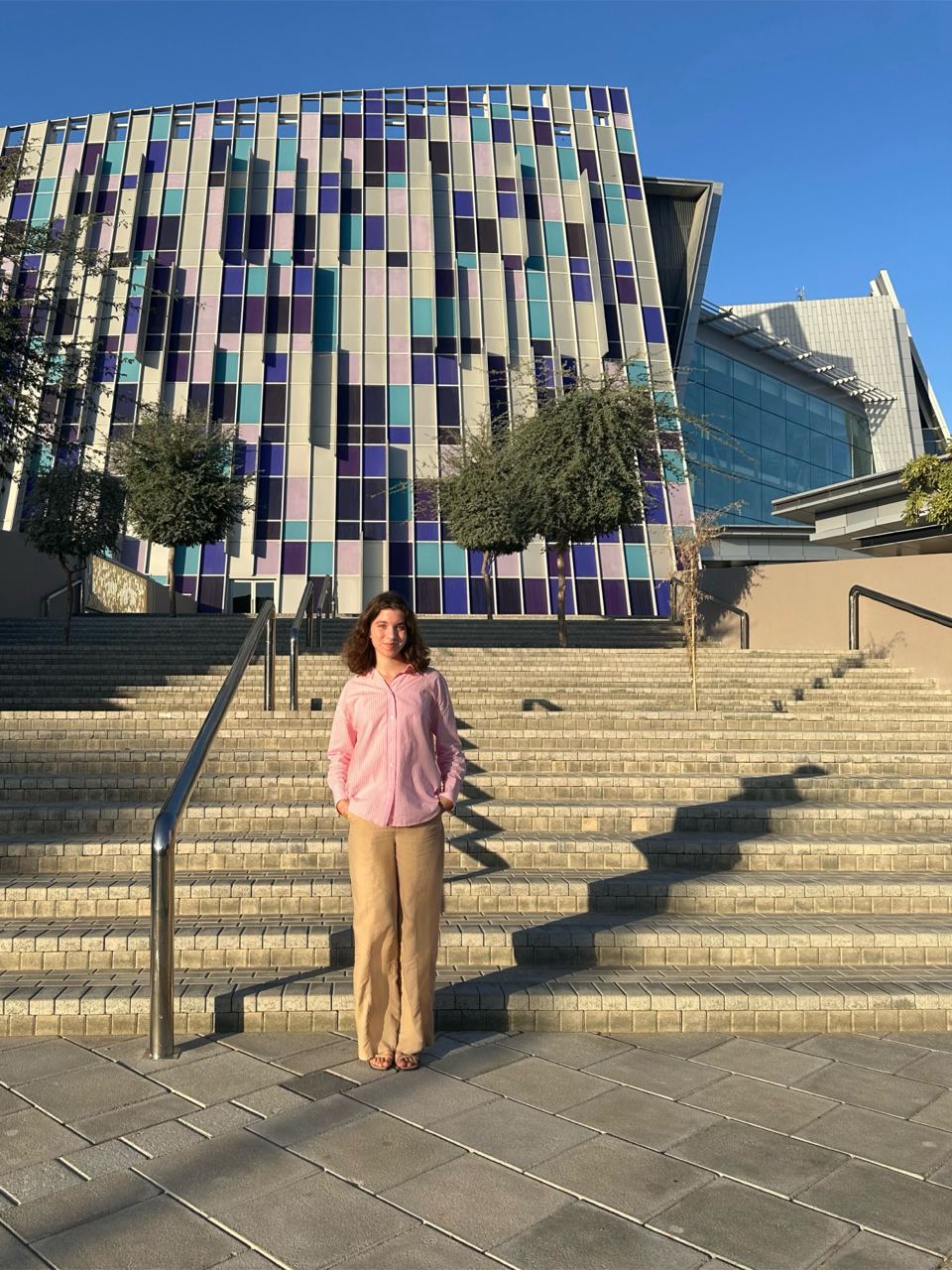Students Share Exchange Experience of United Arab Emirates University

ICEF Student Ulyana Kobylkina: ‘It's Been a Very Special Experience.’
What are the eligibility requirements for this exchange?
Applicants are required to provide a convincing motivation letter and have no academic arrears at the time they go on the exchange. This exchange programme welcomes students of both ICEF and FES. Confirmed applicants will need to fill out lots of paperwork, including documents required for the student visa. We were the first three students to pioneer this exchange after the exchange agreement had been signed, and naturally situations would arise where we needed more information, but now that we have paved the way, subsequent groups will have it easier.
How does the UAEU campus differ from HSE?
The most remarkable difference is that the UAUE campus is 'two-part': one part for male students and the other for female, and from what I understand, the UAUE holds campus-wide events either on the male side or in the administration building. Professors of either sex are allowed in either of the parts, but classes are always single-sex.
The schools in the female part are housed in separate buildings. There’s a food court, supermarket, student village (stores and services to spare students the need to go to town), a sports centre with a swimming pool and courts, housing units, and a mosque. It’s a fairly large campus and there are buses that stop at each building. The sports centre has a gym and offers group workouts, but you need to have a local ID and medical clearance to go there.

What types of housing are available on campus?
UAEU lies outside the limits of a city called Al Ain, which is a two-hour drive from Dubai and Abu Dhabi. The international student dormitory is located off-campus and has a bus line operating weekdays every 15–30 minutes.
The dorm rooms are for two beds, with one kitchen and one bathroom shared by several rooms. There’s a small gym, a stadium, and couple of basketball and tennis courts on the premises, as well as a medical unit.
The housing units have air conditioners working non-stop to keep the temperature at 18–20°C. The students are required to sign in at reception every evening. Leaving the dormitory requires written permission from your parents (plus a video call with your father the first time you leave). This did seem somewhat unusual but was not an insurmountable obstacle.
Tell us about your programme of study. What courses were you offered and how close was your curriculum to that of ICEF?
As exchange students, we could take a maximum of four to five courses. All of them were taught by the UAEU College of Business and Economics. We had a wide array of courses to choose from—management, marketing, finance, economics, business analysis, statistics, and more—but the majority of them were either too narrowly tailored or intended for senior students. Hence, our academic advisor asked us to choose more basic ones so that we didn’t have to study too hard.
How is classroom training delivered at UAEU?
The first thing to mention here is that the UAEU uses a four-day work week (Mon–Thu), with the weekend starting on Friday. The courses are taught to classes of 20 to 40 people, with two lectures to attend every week. Each course involves home assignments, tests, group projects, interim and final exams. Class attendance is mandatory and monitored daily. If a student misses four classes in a course without a valid excuse, they are not allowed to sit the exam.
Second, since a single course may have several teachers, the course material is delivered using standard slides and the teachers very often use the class time to explain sample exam tasks. The lecturers tend to ask questions only occasionally and when they did, there weren’t many who wanted to answer them or engage in interaction. We wanted to interact whenever we could.
Do you feel like you will have to catch up with your ICEF courses?
In terms of the amount of material and depth, I found the courses at UAEU to be inferior to those at ICEF. I could tell some students there lacked math skills, which explains why even advanced courses covered mathematical modelling only superficially, relying on the R programming language. So yes, I’m a bit worried that I might have fallen behind my peers at ICEF, even though I was able to follow my core courses (these are typically year-long) online. I hope I won’t have problems keeping pace in the second semester. My advice to new exchange students at UAEU is take more advanced courses.
How was your experience with your classmates from other countries?
The vast majority of girls in my class were UAE nationals. I also talked to girls from Palestine, South Africa, and Oman. Everyone was friendly and helpful (some volunteered to translate for us into Arabic to help settle various issues and interact with our administrators). Many were interested to know where I came from and how I liked it there. Some shared their own experience or recommended their favourite weekend go-to places.
Was it difficult to adjust to campus norms and the cultural context?
Yes. The UAE upholds its culture and authentic traditions, although this may not be noticeable in the usual tourist spots. Those seeking an authentic and immersive adventure should visit mosques and heritage sites outside of Dubai. The UAE celebrates its National Day on December 2. All cities are decorated for the day's celebrations. UAEU marked it by setting up outdoor fairs selling traditional sweets and showcasing the local culture.
It is a requirement to observe the dress code on campus and in the dormitory. Shorts and bare shoulders aren’t allowed, but I think that was the only strict requirement regarding appearance and conduct. Everyone I met outside of campus spoke English well. The country is generally safe and I felt safe. There are no problems with transport, entertainment, or commodities in bigger places.
What were the positives and negatives of the exchange?
On the upside, it was a very special experience with opportunities to experience a new culture, meet local people, and explore Al Ain, Dubai and Abu Dhabi. By overcoming the challenges of adapting to new cultures, we become more self-reliant and better communicators. There are many ways on campus to make sure your free time is used wisely, including self-study, projects, and sports (I got to play in the university basketball team).
When it comes to the curriculum, I found it to be less structured than ICEF’s. And because it’s focused largely on practical application of the course material, it offers less theory, less model interpretation, and ultimately less profound knowledge. Also, I was a bit discouraged by the organisational side of things at UAEU. We didn’t get all the pre-arrival information and there were some paperwork issues on arrival. But this is less likely to affect subsequent groups on this exchange.
The exchange at UAEU might be a good choice for those who are open to new challenges and prepared to adapt to a new culture. It is a great opportunity to experience the authentic learning and social environment and return home a better problem-solver and intercultural communicator.
FES Student Nika Prokudina: ‘Seeing the World in a New Way’
How did you get accepted to the mobility programme with United Arab Emirates University?
The programme had two places for students of my faculty. It uses a competitive selection procedure that looks at applicants’ academic rating. Applicants are required to submit a completed application from, motivation letter, endorsed academic transcript, and English proficiency certificate (I used my HSE English exam results).
As for our student visas, we got them on arrival in the UAE for the entire duration of study at UAEU, which was very convenient.
What facilities does the UAEU campus offer?
The UAEU campus offers a thoroughly thought-out infrastructure with everything for comfortable studying and living. At the same time, it’s essential to observe on-campus requirements and local norms—they differ markedly from our environment with its freedom of action.
You studied your UAEU courses in parallel with your FES curriculum. What helped you succeed with both? What did you study at UAEU and how does the learning environment compare to HSE?
I took five courses at UAEU: Business Finance, Case Studies in Finance, Investment, Supply Chain Management, and Entrepreneurship, the latter being an elective. There were three HSE courses to study online; a fourth one was rescheduled to next year. So overall, I’ve stayed up to date with the curriculum.
My courses at UAEU were much less demanding compared to the HSE curriculum. The training there is much more hands-on, with multiple case studies, case analyses, and real-life examples. None of the courses that I took offered comprehensive theory or complex mathematical models. Instead, some offered extra material and access to Bloomberg resources for extra instruction and workshop certificates.
Unlike at HSE, where the seminar is always after the lecture, UAEU uses a mixed delivery format, with lectures involving discussion and teacher–student interaction. A nice bonus was that I studied in a small class (of about 30 people), which allowed for student–teacher rapport.
On this exchange, I was able to explore new topics without any stress or pressure. Combining the curricula seemed to be an easy job because the courses weren’t too difficult. I was perfectly able to sit in my online classes with HSE and keep pace with the core curriculum.

Tell us more about the learning process at UAEU. Were there many home assignments?
All my teachers there were open and easy to connect with.
The course grade normally includes a series of minor tests, a mid-term, and a final exam. No home assignments as we know them—we did group projects instead. And those were graded too.
The courses offer a convenient schedule, with stacked classes that fall on two days (Mon/Wed or Tue/Thu). I had plenty of free time.
Foreigners were very easy to spot because nearly all students in my class were Muslim and wore traditional clothing. I would often be approached by local students asking me to tell them about Russian culture and offering information about their own. It was a friendly and hospitable environment where I could feel people’s caring attitude. I really liked being there and connecting with the local community.
What stands out from your time in the UAE?
The sunny weather and the warm winter. They stand in pleasant contrast to the Russian cold. I also felt warmth from the people around me.
When it comes to local cuisine, I liked the traditional karak (a deliciously flavoured and very comforting tea), and dates. They are sweet and chewy and grow on every palm tree, and are even listed as part of the local heritage.
The people of the UAE are sensitive and respectful towards their local culture. This manifests in everything from clothing to behaviour to rules, reflecting the UAE’s cultural fabric. It was a fascinating experience exploring the emirates and getting a feel for their distinct atmospheres.
Also, even though this exchange had some shortcomings, it was a great time away from my usual routine. I was able to explore Arab culture, make friends, refresh my English, and take new courses. I would definitely recommend it to those who seek exposure to new environments and want to see the world in a new way.